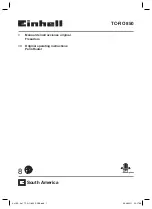
12
4
Connect the Router to the Network
I/O Controller Console and Auxiliary Port Cable Connections
Note
Both the console and auxiliary ports are asynchronous serial ports; any devices connected to these ports must be capable
of asynchronous transmission.
1.
Before connecting a terminal to the console port, configure the terminal to match the router console port as follows: 9600
baud, 8 data bits, no parity, 2 stop bits (9600 8N2).
2.
Use an EIA/TIA-232 DCE console cable to connect the terminal to the console port. After you establish normal router
operation, you can disconnect the terminal.
Note
You must supply your own interface cable between the auxiliary port and the equipment you are connecting. For
console and auxiliary port pinouts, see the online Cisco 7206 Installation and Configuration Guide, Chapter 3,
“Console Port Signals and Auxiliary Port Signals.”
Depending on the I/O controller installed in your Cisco 7206 router, you may have an MII port, RJ-45 ports, or no Ethernet
port. The following table provides information about the types of ports on different I/O controller models.
1
Auxiliary port-DTE-mode; EIA/TIA-232, DTE-DB-25
connector (for modem, CSU/DSU, etc.)
3
Modem
2
Console port-DCE-mode; EIA/TIA-232, DCE-DB-25
connector (for data terminal)
4
Console terminal
57007
MII
EN
RJ45
EN
RJ45
LINK
1O PWR
OK
RJ-45
CPU RESET
FAST ETHERNET INPUT/OUTPUT CONTROLLER
ENABLED
PCMCIA
EJECT
SLOT 0
SLOT 1
FE MII
1
2
3
4
Содержание CISCO7206
Страница 31: ...31 ...













































